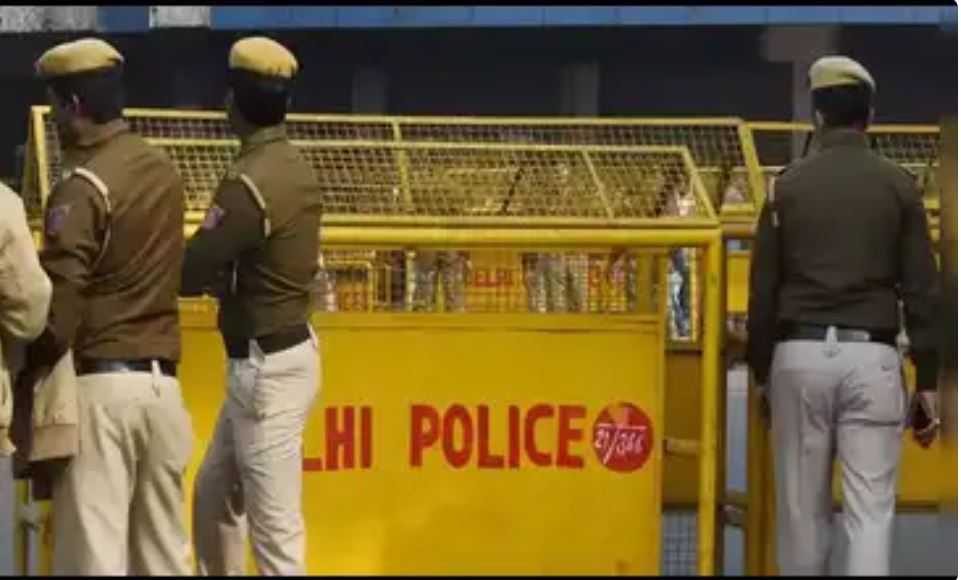
Table of Contents
Delhi Traffic Police Updates Steps on Easing Congestion on Ring Road Stretch
Delhi’s Ring Road — one of the capital’s busiest arterial routes — has long been notorious for daily traffic snarls, especially during peak hours. In a significant development aimed at decongesting this vital corridor, the Delhi Traffic Police has announced a series of strategic measures to improve traffic flow and enhance commuter experience.
Here’s everything you need to know about the latest updates and what it means for daily commuters:
Delhi Traffic Police : Why Ring Road is a Traffic Hotspot
The Ring Road is a critical 55-km stretch encircling the central areas of Delhi and connects several major junctions including AIIMS, Dhaula Kuan, Ashram, ITO, Rajouri Garden, and Azadpur. On average, over 1.5 million vehicles ply on this route daily, including buses, private cars, and commercial vehicles.
Several factors contribute to congestion on this stretch:
- High volume of vehicular traffic
- Inadequate lane discipline
- Ongoing construction projects
- Multiple bottlenecks and illegal parking
- Lack of pedestrian crossings and foot overbridges
Key Measures Announced by Delhi Traffic Police

To address these pressing issues, the Delhi Traffic Police, in coordination with the Public Works Department (PWD) and Delhi Development Authority (DDA), has outlined a multi-point strategy:
1. Deployment of Additional Traffic Personnel
More than 200 additional traffic marshals and officers will be deployed during peak hours across major chokepoints on Ring Road. These personnel will actively manage lane movement and ensure smooth vehicular flow, especially near flyovers and signal-free corridors.
2. Intelligent Traffic Management System (ITMS)
Installation of AI-powered surveillance cameras and traffic sensors at over 30 key locations. These systems will monitor real-time congestion, detect violations (like lane cutting and red-light jumping), and automatically adjust signal timings to reduce bottlenecks.
3. Parking Enforcement
The Traffic Police will initiate a strict crackdown on illegal roadside parking, especially near markets and hospital zones like AIIMS and South Extension. Towing vehicles and imposing heavy penalties are among the proposed measures.
4. Coordination with Metro Services
In an effort to reduce the volume of private vehicles, the traffic department is working with the Delhi Metro Rail Corporation (DMRC) to improve last-mile connectivity and parking near metro stations. More park-and-ride options and feeder buses are in the pipeline.
5. Infrastructure Enhancements
PWD is expediting the repair and expansion of service lanes and ramps at congested junctions such as Ashram Chowk and Dhaula Kuan. New U-turn provisions and dedicated bus lanes are also being considered to segregate vehicle types and streamline movement.
6. Public Awareness Campaign
A fresh campaign titled “Smooth Ride Delhi” will be launched to promote traffic discipline and road safety. It includes radio jingles, social media outreach, and partnerships with ride-sharing platforms to encourage staggered travel hours.
Focus on Key Hotspots
The new strategy places specific emphasis on high-congestion areas, which include:
- Ashram Flyover Extension Area: New diversion plans will be introduced to reduce bottlenecks caused by merging lanes.
- ITO Intersection: Reconfiguration of signal timing and ban on certain vehicle movements during rush hours.
- Moolchand-AIIMS Stretch: Dedicated corridor for emergency vehicles and restricted heavy-vehicle entry during school and office hours.
Pilot Projects and Future Plans
To evaluate the effectiveness of these measures, the traffic police will initiate a 30-day pilot program across select locations. Based on real-time data and feedback from commuters, the plan will be adjusted accordingly.
Long-term goals include:
- Full integration with Delhi’s Unified Traffic Management System
- Use of drones for aerial congestion monitoring
- Expansion of smart traffic signals across the entire Ring Road
Impact on Commuters
If effectively implemented, these changes are expected to:
- Reduce average travel time on Ring Road by 20–30%
- Enhance safety for pedestrians and cyclists
- Improve emergency response time for ambulances and fire services
- Lower vehicular emissions due to reduced idling
Feedback from Citizens and Experts
While the plan has been welcomed by many, transport experts stress the need for long-term urban mobility planning.
“Technology can help only so much. There is a dire need to improve public transport infrastructure and discourage private vehicle usage,” said Anuj Malhotra, a transport analyst.
Commuters have also voiced mixed reactions:
- Positive: “AI cameras and stricter policing can finally make a difference.”
- Concerned: “Unless footpaths and crossings are improved, it’s still unsafe for pedestrians.”
Decoding OBD Code U0423: Causes, Symptoms, and Solutions for “Invalid Data From Instrument Cluster
Conclusion
The Delhi Traffic Police’s initiative to address congestion on the Ring Road is a much-needed move toward making urban commuting smoother and safer. With a mix of technology, enforcement, and infrastructure upgrades, the capital might finally see relief from its long-standing traffic woes — but success will ultimately depend on consistent implementation and public cooperation.
